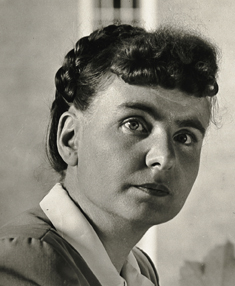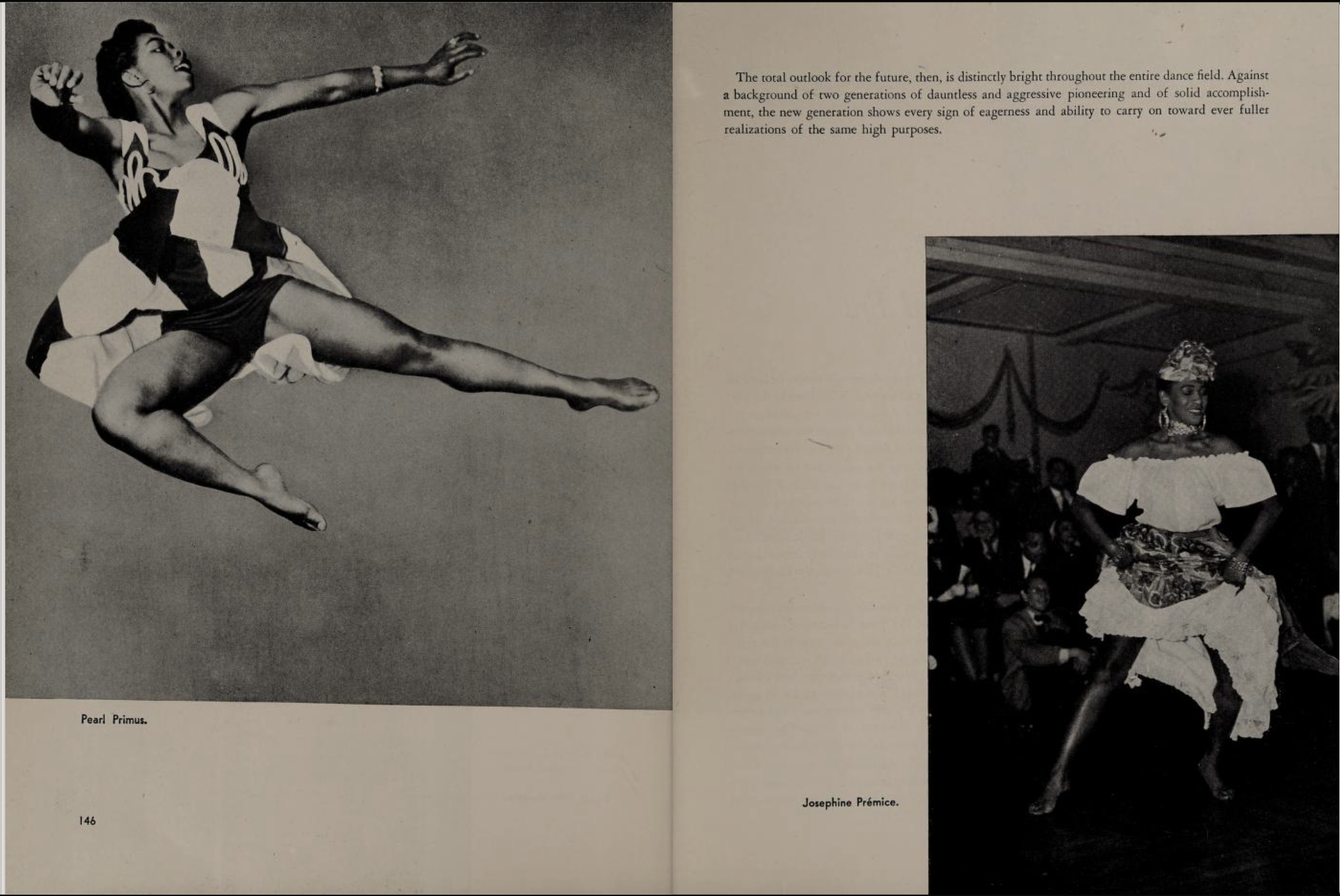Archive
Gerda Peterich
- Gerda
- Peterich
Gerda Mattusch; http://d-nb.info/gnd/1059300990
- 09-03-1906
- München (DE)
- 07-1974
- New Hampshire (US)
- Photographer
The German émigré Gerda Peterich had a photographic studio at 332 West 56th Street and in New York, where she specialised in dance and portraiture. In addition, she visited dance studios and photographed outside in the city.
Word Count: 36

Portrait of Gerda Peterich, n.d. (© Gerda Peterich Papers, University Archives Special Collections Research Center, Syracuse University Libraries). 
Pear Primus by Gerda Peterich published in The Dance, edited by John Martin, Tudor Publishing, 1947, p. 146 (Photo: Helene Roth). Martin, John. The dance; the story of the dance told in pictures and text. Tudor Publishing, 1947.
Peterich, Gerda. “Cobblestone Architecture of Upstate New York.” Journal of the Society of Architectural Historians, vol. 15, no. 2, May 1956, pp. 12–18. JSTOR. Accessed 5 March 2021.
Rosenblum, Naomi. A History of Women Photographers. Abbeville Press, 1994.
Word Count: 47
My deepest thanks go to the Special Collections and Research Center at the Syracuse University for granting me permission to use images.
Word Count: 22
New York, US (1939–1946?).
7 West 92nd Street, Upper West Side, New York City (residence 1939–1946?); 332 West 56th Street, Central Park South, Manhattan, New York City (studio, 1940–1949).
- New York
- Helene Roth. "Gerda Peterich." METROMOD Archive, 2021, https://archive.metromod.net/viewer.p/69/2948/object/5138-10964839, last modified: 26-11-2022.
-
Lotte JacobiPhotographerNew York
In October 1935 the German émigré photographer Lotte Jacobi, together with her sister Ruth Jacobi, opened a photo studio on 57th Street. The two sisters had to leave their parents' photo studio in Berlin in the 1930s and emigrated to New York.
Word Count: 41
Ellen AuerbachPhotographerNew YorkWhen she arrived in New York in 1937, the German-born photographer Ellen Auerbach (formerly Rosenberg) had already passed through exile stations in Palestine and Great Britain.
Word Count: 25
Lilly JossPhotographerNew YorkLilly Joss was an émigré freelance photographer in New York. She worked for the Black Star photo agency and magazines and was also a portrait and theatre photographer.
Word Count: 28
Trude FleischmannPhotographerNew YorkTrude Fleischmann was an Austrian-Jewish portrait and dance photographer who emigrated in 1939 to New York, where she opened a studio in Midtown Manhattan with the photographer Frank Elmer.
Word Count: 28
Christmas Exhibition of The Center for European Immigrant's Art and HandicraftLilo HessPhotographerNew YorkThe German émigré Lilo Hess was an animal photographer working for the Museum for Natural History and the Bronx Zoo, as well being a freelance photographer and publisher of children's books.
Word Count: 31
Ruth JacobiPhotographerNew YorkRuth Jacobi was a German-speaking, Polish-born photographer who emigrated in 1935 to New York, where she opened a studio together with her sister Lotte Jacobi. She later had her own portrait studio.
Word Count: 31
New School for Social ResearchAcademy/Art SchoolPhoto SchoolUniversity / Higher Education Institute / Research InstituteNew YorkDuring the 1940s and 1950s emigrated graphic designers and photographers, along with artists and intellectuals, were given the opportunity to held lectures and workshops at the New School for Social Research.
Word Count: 31